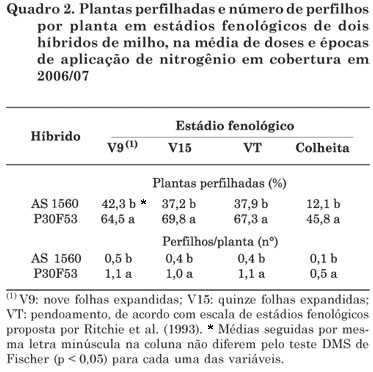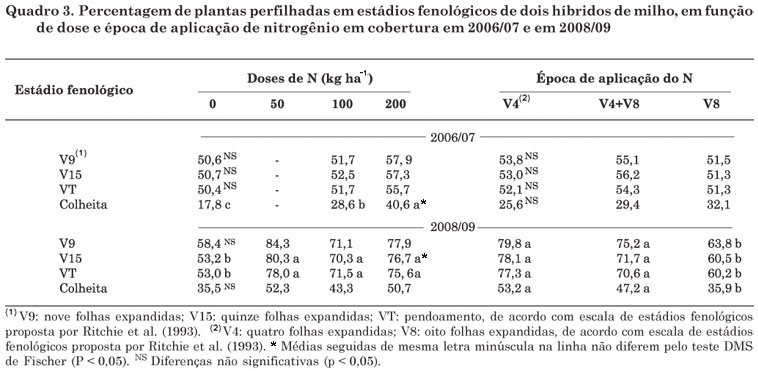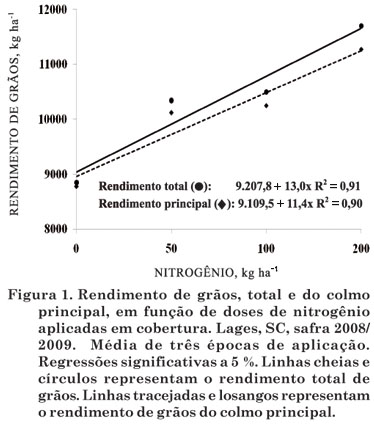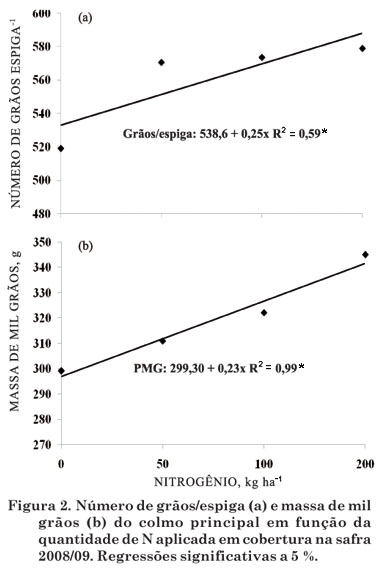Nitrogen influences the processes of morphogenesis and tillering in Poaceae. However, its effect on maize tillering is unknown. The purpose of this study was to assess whether N rates and application time affect tiller emission, survival and contribution to maize grain yield. The experiment was set up in Lages, Santa Catarina State, Brazil, in the growing seasons of 2006/07 and 2008/09. The experimental design was arranged in randomized blocks with split plots. In the first year, the main plots consisted of two maize hybrids (AS 1560 and P30F53), the split plots of three N rates (0, 100 and 200 kg ha-1 N), and the split-split plots of three rates of N sidedressing (V4, V4 + V8 and V8). In the second year, four N rates were evaluated in the main plots (0, 50, 100, and 200 kg ha-1 N) and the same sidedress rates in the split plots. The percentage of plants with tillers, number of tillers per plant, grain yield and yield components were assessed. The tillering capacity and grain yield of hybrid P30F53 were greater than of AS 1560. Nitrogen sidedressing reduced tiller mortality at harvest in the first year, and until flowering in the second season. Nitrogen sidedressing at V4 stimulated tiller emission and survival at harvest 2008/09. Nitrogen sidedressing increased grain yield in both study years, and enhanced the direct contribution of tillers to grain yield in 2006/07. The time of nitrogen sidedressing did not affect grain yield, regardless of the growing season. Maize tillering capacity differed among hybrids. In environments with adequate N availability, tillers contribute to increase maize grain yield.
Zea mays; tillering; nitrogen rates; nitrogen application time








